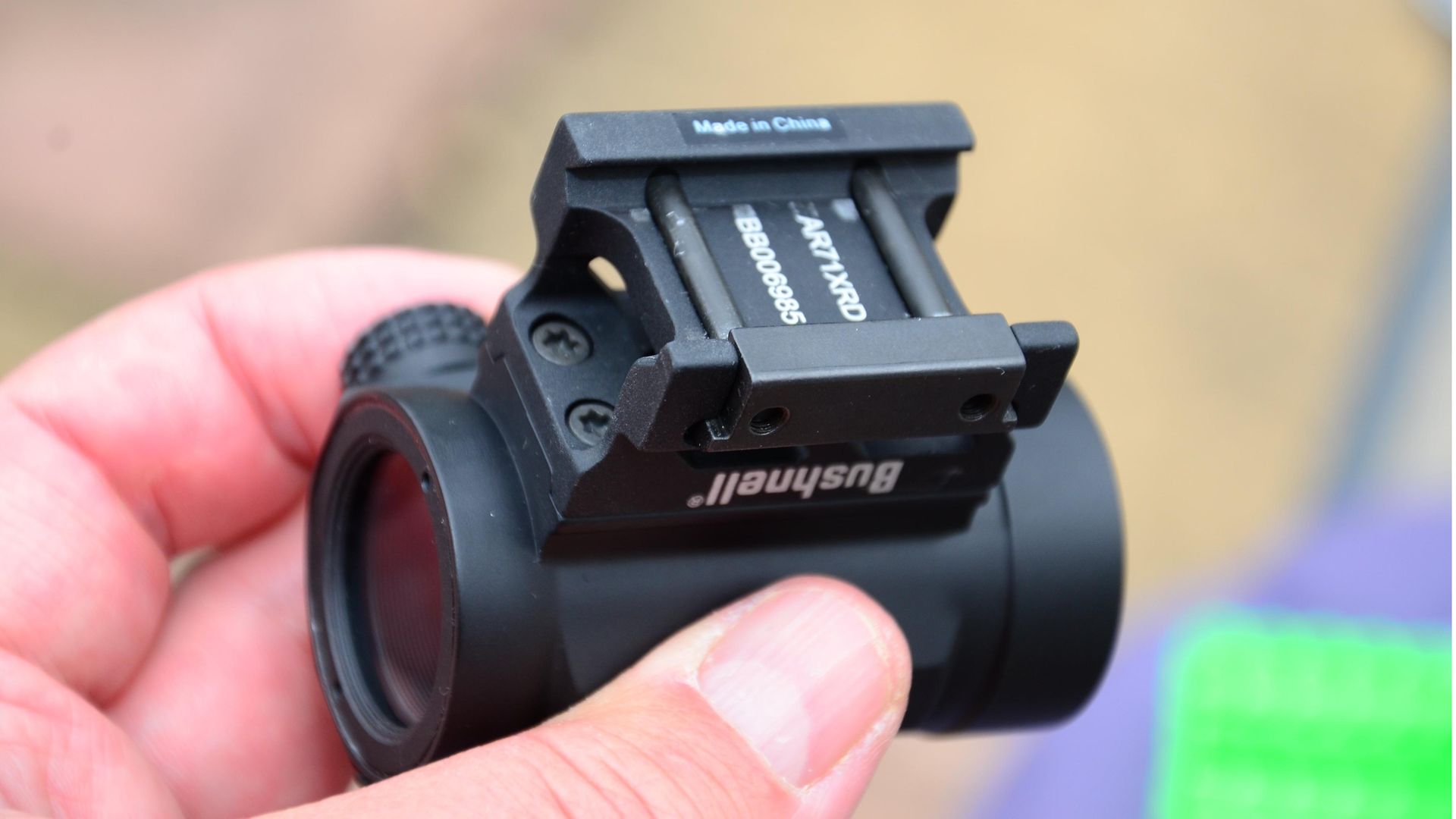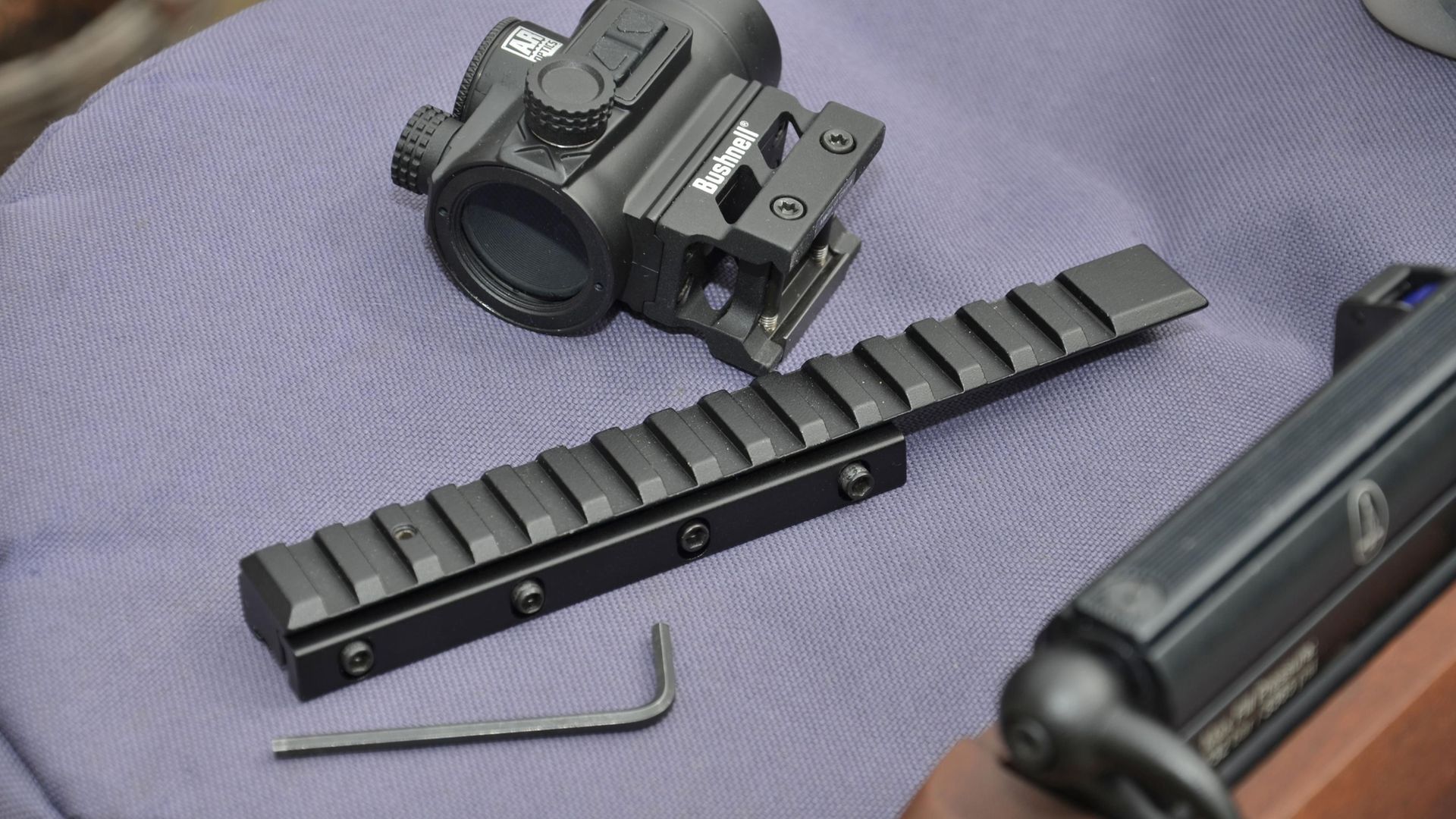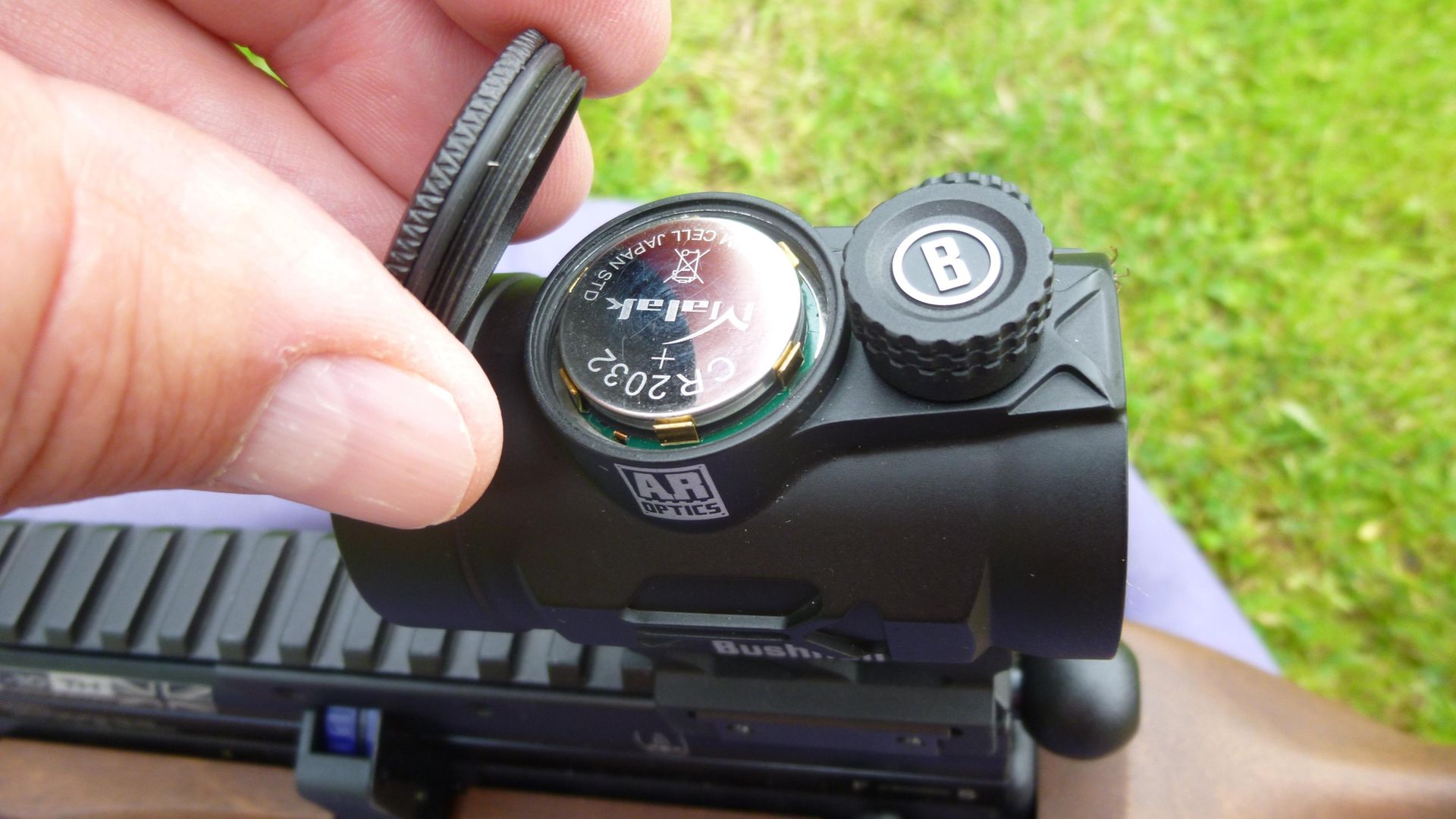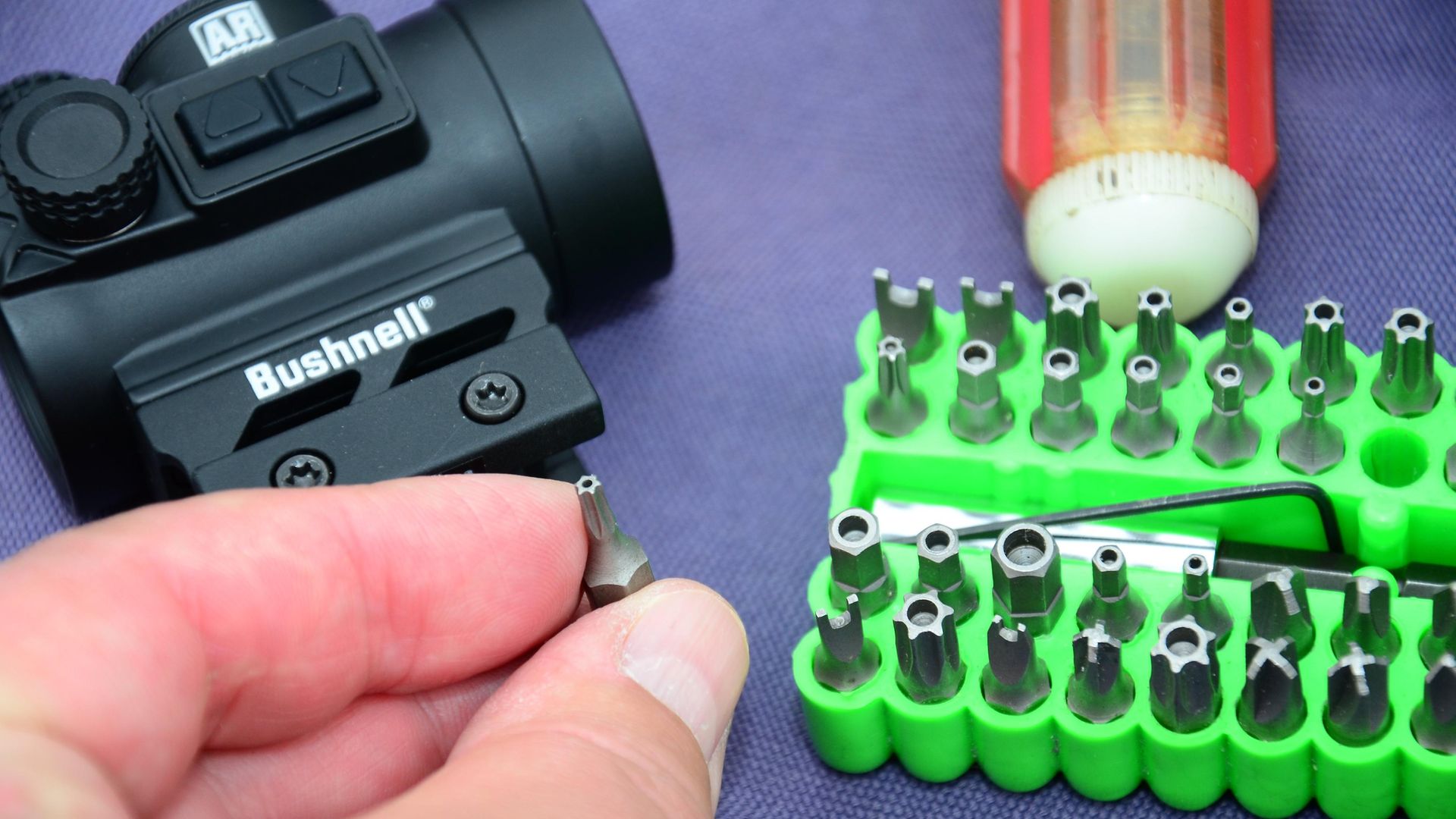Mark Camoccio reviews the new Bushnell AR TRS-26 Red-dot sight and finds his target acquisition and spacial awareness greatly improved when shooting his air rifle...
 credit: Archant
credit: Archant
OK, time to ‘fess-up’, as the trendy lingo goes. My shooting career nearly didn’t happen at all because a rather inauspicious start saw me take out my parents’ shed window, when I was barely a teenager! Yes, I’ve got away with a few things in life, and this fairly worrying episode can certainly be considered a ‘near miss’, yet thankfully, no one got hurt!
So, just how did I manage to shoot several inches high of my backstop, and put a couple of shots through the glass? Good question; a second-hand Single Point sight (a popular early red-dot system from the ‘70s) was the culprit, and with my inexperience showing, I was too slow to realise just how far out were the adjustments! I learned a valuable lesson that day, and all zeroing now starts at 6 yards from the board, to catch shots, and calibrate sights as I move further back!
Despite that early gaffe, the seeds were sown and I’ve had a soft spot for dot sights ever since. On test here is the Bushnell AR TRS-26, and it represents a fair old leap forward from that early sight of mine. The Single Point was what’s termed as ‘an OEG device’, or Occluded Eye Gunsight, where the eye superimposes the red element, sitting inside a solid tube, onto the target; whereas the Bushnell allows the shooter to see through the tube and view an electronically illuminated dot. At just 2.6" in length, and weighing just 8oz, the TRS-26 is best described as ‘super-compact’, and the ideal addition to guns with an odd profile, where space is at a premium.
Inside the padded box, along with the sight, there’s an integral mount/base, and that neat little lens cloth in its own pouch, along with instructions and warranty.
 credit: Archant
credit: Archant
The advantage of using a red-dot sight
So, why a red-dot system? Well, without magnification on this model, the big drawback is that it isn’t easy to see shots appear. The plus side, and the raison d’être for this type of hardware, is that ‘both eyes open’ simple approach, which offers super-fast target acquisition and full awareness of your surroundings. For my test, I had the Bushnell clamped to a BSA R10-TH Super Carbine that I happened to have about, and shooting over 25 yards at a circular dot target of 2 inches, proved just about ideal for the perfect sight picture.
The ideal approach is to get the dot truly central within its circular ‘window’, whilst holding the dot on the centre of the target. I’m always amazed by just how effective this type of sight can be, and with half-inch groups soon forming, I was instantly impressed; so much so, that I would consider taking on
live stuff.
 credit: Archant
credit: Archant
How to set up the Bushnell AR TRS-26 red-dot sight
The integral base offers Weaver/Picatinny-style mounting, and this can be bolted onto dovetails, too, with an appropriate adaptor rail. You’ll need the torque/star-type socket set to tighten the mount. Set-up is fairly easy because eye relief with this style of sight isn’t too critical, and whilst it might be stating the obvious, allow some gap between the sight and the eye when fitting to a recoiling gun.
Power for the red dot comes from one of the popular disc-type CR2032 lithium batteries (included), and this can be loaded or replaced simply by unscrewing the cap on the top. Eleven brightness stages are incorporated for the dot, and to adjust the level, press the up and down rubber-coated arrow buttons on the right-hand side. Just keep pressing the up arrow to switch on, and hold and press the down arrow to switch off.
The viewing lens is 26mm – referred to in the model name – and for the record, the image is not magnified. So time to get zeroing! Unscrew the caps of the two small turrets, and adjust, top for elevation, and side for windage, in the usual way.
Click values on both are 1MOA for the record, and here, whilst a small screwdriver is required to turn the turrets, you are more likely to set up the sight and leave well alone with this model – so no big deal really.
 credit: Archant
credit: Archant
Bushnell AR TRS-26 red-dot sight - brightness & battery
Illuminated red dots, or reticles for that matter, can suffer from being too bright, with all the irritating glare that comes with that, but the TRS 26 is nothing if not versatile. As mentioned, there are eleven brightness levels, so most scenarios should be catered for. Of course, shoot on an ultra-low level, and it’s just so easy to leave it switched on accidentally. It’s infuriating and we’ve all done it!
Thankfully, Bushnell take into account the wally factor, and this sight ‘auto powers off’ after two hours – excellent. Well done, chaps! It also has a longer-lasting battery than previous models, and with a stated battery life of an incredible 30,000 hours when used at 6 power brightness, it’s an impressive boast.
Obviously, personal taste and conditions dictate play, but on test, with brightness set to 6, I found the dot bright enough to be easily visible in daylight, with no annoying glare. I also found at this setting, the 3MOA dot appears precise, allowing for accurate shot placement.
 credit: Archant
credit: Archant
Bushnell AR TRS-26 red-dot sight - test conclusion
I’m no great fan of illuminated reticles, but I have to say, I really do appreciate red-dot sights, especially state-of-the-art examples such as this AR TRS-26.
Bushnell are a respected optics brand, and this ultra-compact model is just so handy. It’s easy to set up and use; it’s robust waterproof, nitrogen purged (fogproof), shockproof… and damn good fun!
Technical Specifications
Model: Bushnell AR TRS-26 Red Dot
Manufacturer: Bushnell
Dot Size: 3 MOA
Click Value: 1MOA
Clicks Per Rotation: 36 on each turret
Number of Rotations: 4.5 elevation, 5.25 windage
Eye Relief: Unlimited
Weight: 8oz
Battery: CR2032 lithium
Length: 2.6 inches
Turrets: Low profile, screw cap
Price: £185 inc battery
Contact: bushnell.com